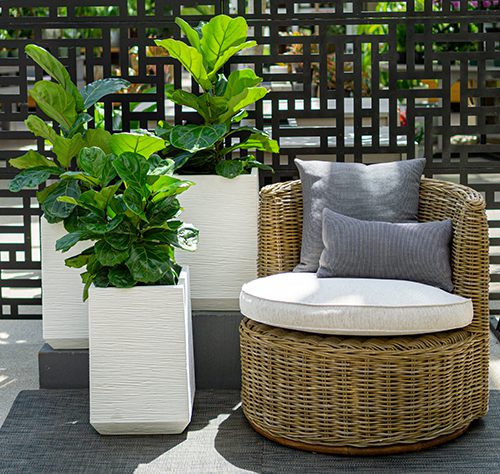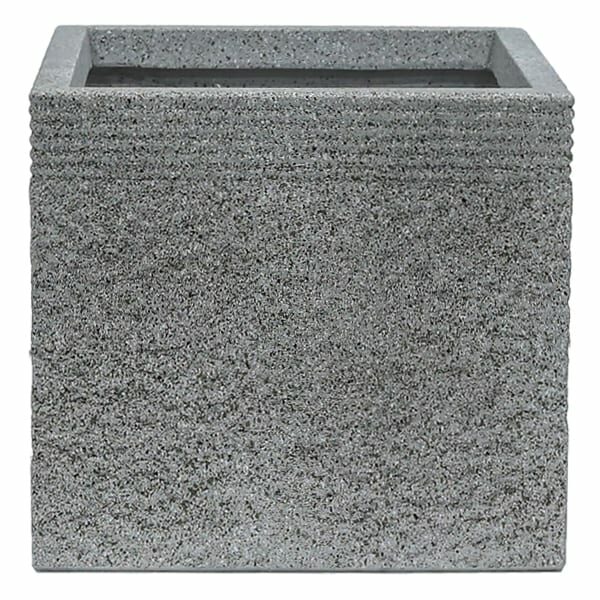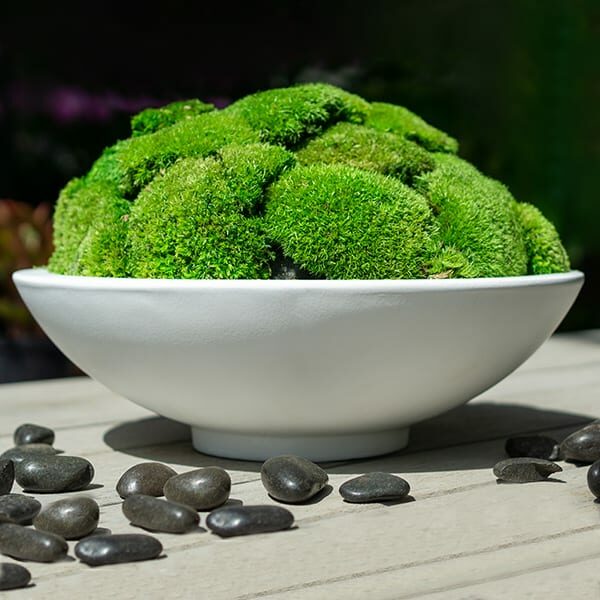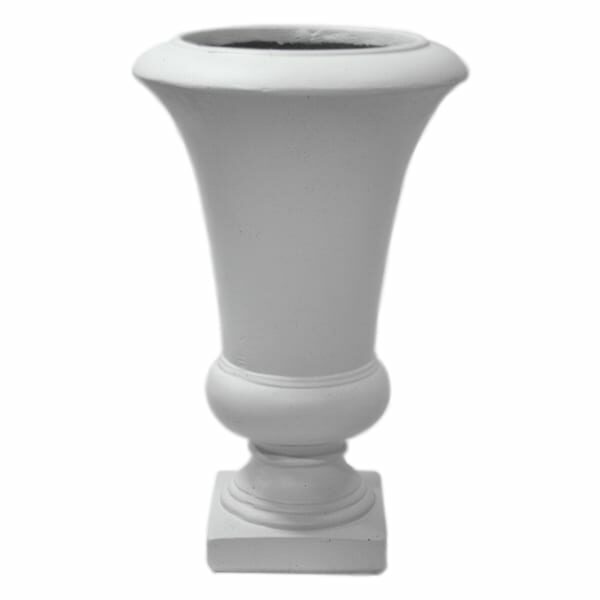Do you love plants but struggle with keeping them alive and healthy? Then you’ve come to the right place! This blog is all about going back to the basics and understanding how to keep indoor plants alive. You will learn all about purchasing a healthy plant, optimizing your plant’s environment, and troubleshooting common plant issues.
In this blog:
- Purchasing your plant
- Assessing your new plant’s health
- Choosing the right sized plant container
- Picking the right soil to set your plant up for success
- Watering your new plant
- Understanding your plant’s humidity needs
- Knowing how much sun your plant needs
- Troubleshooting Common Plant Problems
Purchasing your plant
When it comes to purchasing your plant, it is important to keep in mind that small garden centers and greenhouses are the best places to make your purchase. This is because these stores have dedicated horticulturalists who are passionate and knowledgeable about plants. As a result, their plants tend to be healthier than those found in large box stores. They also can provide advice to beginner plant parents, guiding you to find the right plant for your specific needs.

Wherever you decide to buy your plant from, we want you to be informed about the things to look out for before you make your purchase.
Assessing your new plant’s health
Before buying your plant, you should look it over and make sure it does not have any major issues. Many plant problems are easily fixed, but as a beginner plant owner, you should stick to a healthy plant that has few existing issues. This is your best chance at being able to keep indoor plants alive.
Signs of an unhealthy plant
One sign of an unhealthy plant is fungal growth. This will present as brown, black, or white spots on the leaves of the plant. You may even notice fungal growth on top of the soil.
A second reason to pass on a plant is that it has been underwatered. A plant that has been underwatered will have yellow or wilted leaves and dry soil. While fixable, these issues are not ideal for a beginner to take home.

Finally, a healthy plant will not have roots growing out of the bottom of its grow pot. If this happens, it means that the plant is rootbound and has been in its container for too long. It is not healthy for the plant to have roots that are bound together tightly. A plant’s root system needs to be able to spread out and expand. It is not necessarily a life-or-death situation for the plant, but it will need to be repotted and the roots should be spread out beforehand.
We talk more about common plant issues and how to remedy them here.
Signs of a healthy plant
A healthy plant will have plenty of new growths. One fun example of this is what happens to healthy spider plants. Healthy spider plants often have spider “babies”, which means that they grow brand new spider plants that you can safely remove and replant without hurting the original plant. Learn more about how to propagate spider plants here.

The leaves on a healthy plant should be firm to the touch and vibrant in color. Its root system should be well-formed, meaning that it has an abundance of strong, white roots and no sign of disease or infestation.

Choosing the right sized plant container
Choosing the right sized plant container is crucial to the success of your plant’s health. It is important to repot your plant from the pot you purchased it in. The general rule with this is to make sure that the new pot is 2” bigger than the original plant pot. Plants need room to grow, so sizing up is very important.
Proper drainage is very important to your goal of keeping your indoor plant alive. We recommend keeping your plant in its larger grow pot and placing the grow pot on a plant saucer inside your decorative container.
You can direct plant in a decorative container, but water may seep through it and stain the surface of the space you are keeping it on. It may also ruin your decorative plant pot depending on its material. If you decide to direct plant into a decorative planter, you will need a saucer on the bottom of the outside to catch the overflow of water.

Pottery Designs offers a gorgeous variety of planters in many shapes, colors and sizes that will fulfill all of your indoor and outdoor planting needs. Click the link below to shop now!
A few suggestions before repotting
Before you place your plant in its new container, you should gently spread out its roots at the bottom so it can adapt to its new container and expand its roots into all the new space it has in its larger pot.
We also suggest spraying it with an insecticide to get rid of any unpleasant pests before you bring your new plant into your home. We recommend Safer soap, or a 90/10 mixture of ivory liquid soap and water.
Picking the right soil to set your plant up for success
Potting soil should have all the right ingredients to ensure the life of your plant. Peat and perlite for example, are often found in potting soil because they support aeration. Any high quality indoor potting soil will generally be a good choice for your plants. There are many to choose from, such as Miracle Grow’s Indoor Potting Mix or Espoma organic indoor potting mix.
Do not forget to fertilize!
No matter which potting soil you choose for your new plant, it will need fertilizer too. Though potting soil does a good job of sustaining a plant, fertilizer gives the plant the extra nutrients that it needs. Without fertilizer, plants can become malnourished. They may look less vibrant, bloom less, and be more susceptible to plant diseases and infestations.

When you choose a fertilizer for your plant, you should pay attention to the NPK ratio. This is shown by the three numbers found on the bag, which are the percentages of Nitrogen, Phosphorus, and Potassium.
Nitrogen helps plants grow new stems and leaves. Nitrogen is the important starting point of getting things moving.
Phosphorus assists in the transferring of energy in a plant and supports photosynthesis. It also helps with getting flowers and fruit to grow.
Lastly, Potassium gives plants the strength they need to fight diseases. It also supports higher crop yields, the quality of a plant, and offers protection to the plant and root system when there are weather changes.
These three chemicals are a very important part of keeping your indoor plants alive.
Watering your new plant
Less is more! While plants absolutely need water to grow and stay alive, it is important not to overwater them. Overwatering your plants can cause the roots to rot and can even attract gnats. That being said, underwatering can also be deadly.
How can you tell when to water your plant? Check the soil. When it feels dry a few inches into the soil, that is when it should be watered. Often, some get caught up in a strict watering schedule. While it is good to be proactive and plan, it is not always best for the plant. Because each plant is different and has different needs, they will also need water at different times too.
Since many people choose succulents as their first plant, we felt it was important to include that succulents need less water than most plants. In fact, we recommend waiting until the soil is completely dry to water it. People underestimate the care of succulents, but they have very specific needs.

Try not to count the days in between watering just because you feel there should be an exact schedule. Also, it is better for the soil to be a bit too dry than too wet. Again, root rot and gnats!
We prefer using warm water over cold water for plants, and we do not support any ice cubes trends here. Cold water can shock the plants and mess up the root system. Additionally, we do not recommend spritzing plants daily because it can cause fungal growth, and not all plants like it.
When you do water your plant, let the water really soak through it. You will want to water it until water comes out the bottom into the tray.

Understanding your plant’s humidity needs
Did you know that indoor plants thrive the most in 40-60% humidity levels? Though this is the case, they typically will do just fine in your usual humidity levels indoors. The only time this really needs to be highly considered is in Winter when the plants will need that extra humidity to stay alive and thriving.
If you are wondering how to increase humidity, you can simply use a humidifier. You can also group your plants closer together, which forms a humid microclimate and keeps multiple plants healthy at once. Keep in mind that you will want to only bring plants with the same humidity needs into this microclimate, as extra humidity can be deadly to plants like succulents that do not like the extra moisture.

If you’re interested in buying a product that can help you track humidity levels in your home, we recommend this indoor humidity and temperature monitor. It is affordable, reliable, and will give you peace of mind knowing the exact conditions your plants are being kept in.
Knowing how much sun your plant needs
Though different plants need different levels of sunlight, it is important to know that light is literally food for plants, and they will not survive without it. Plants need light for photosynthesis, which is the process that converts light, oxygen, and water into energy.

Most plants require a minimum of five to six hours of sunlight per day, preferably even more than that. A windowsill is a common area for people to keep plants for this reason, though remember not all plants can always tolerate direct sunlight for long periods of time.
You can read some examples of various plants and their wide range of needs here.
Troubleshooting common plant problems
You may be wondering about common plant issues that will arise over time as a plant owner. Knowing how to troubleshoot these issues will help you keep your indoor plants alive long-term.
Root Rot
One very common problem is root rot. Root rot is when the roots of a plant turn mushy and brown. It is usually caused by over-watering and fungus growth. You may be able to treat with a fungicide, but sometimes this issue is unsalvageable.
Yellow Leaves
Another very common issue is yellowing leaves. This can be a bit tricky to figure out because the underlying root cause (no pun intended) could be pretty much anything. Think of yellow leaves on a plant as a cautionary warning signal. For example, most commonly it means the plant is in shock from being overly dry and then suddenly being watered again. Another reason plants’ leaves could be turning yellow is poor drainage. Yellow leaves are not a signal that your plant is dying, rather they are a warning that you should adjust the care of the plant.
Black or brown edges on leaves

Have you ever seen a plant that has black or brown edges on its leaves? This can be a sign that you have salt build up in the soil. Our water has a lot of stuff in it, including salt. The plant’s soil acts like a filter when being watered, and it is not uncommon for salt to build up over time. While plants naturally avoid salt, if it gets too dry, the plant will ultimately absorb it. When that happens, the salt burns the leaves, and you end up with black or brown edges on them.
To fix this issue you must flush your plant. This means that you will need to run water through it completely to get rid of any salt build up that may be stuck in there. It can be helpful to place the plant in the bathtub and use the handheld shower sprayer to do this. If you do not have one, do not worry. You can use the one in your sink, an outdoor hose, or just run it under a regular faucet.

Droopy leaves or wilting plant
Droopy leaves or a wilting plant are usually an easy fix. If you notice that your plant looks droopy and sad, it is because your plant is thirsty and needs water. Keep in mind that you may notice a yellow leaf or two after watering if it was left dry for a long time. This is an easy fix!
Leaves falling off
If you notice leaves falling off it could be because the plant is not getting enough light or water. This also could be a sign of shock. People get worried when they lose a lot of leaves, but the plant will usually rebound and come back strong. Give it some time and do not panic should this happen.
Infestations

If you notice gnats around or on your plant, this signals it is getting too much water. Let the plant dry out more in between waterings. Keep in mind gnats will lay and leave eggs in the soil, so you will want to spray with your Safer soap, or 90/10 mixture of ivory liquid soap and water to get rid of them.
Speaking of bugs, another common problem you may run into is Mealy bugs. They are white, fuzzy, tiny, and like to eat plants. In small numbers they are not terribly dangerous to your plant’s health, but if not taken care of they can become invasive and cause leaves to yellow and curl.

Every plant has its own unique and individual needs. These are overall guidelines to understanding the basic needs of plants and how to care for them properly. We strongly recommend researching the type of plant you are planning to get to know its exact water, sunlight, and fertilizer needs. We hope this helped you learn how to keep your indoor plants alive. Enjoy your plant care journey and best of luck!

In short:
- Assess your new plant’s health
- Choose the right sized plant container for future growth
- Select good soil and fertilize
- Water by touch rather than by schedule
- Keep the humidity between 40-60%
- Make sure your plants have the right amount of light
- Address disease and infestations as they arise
- Keep calm and plant on!






